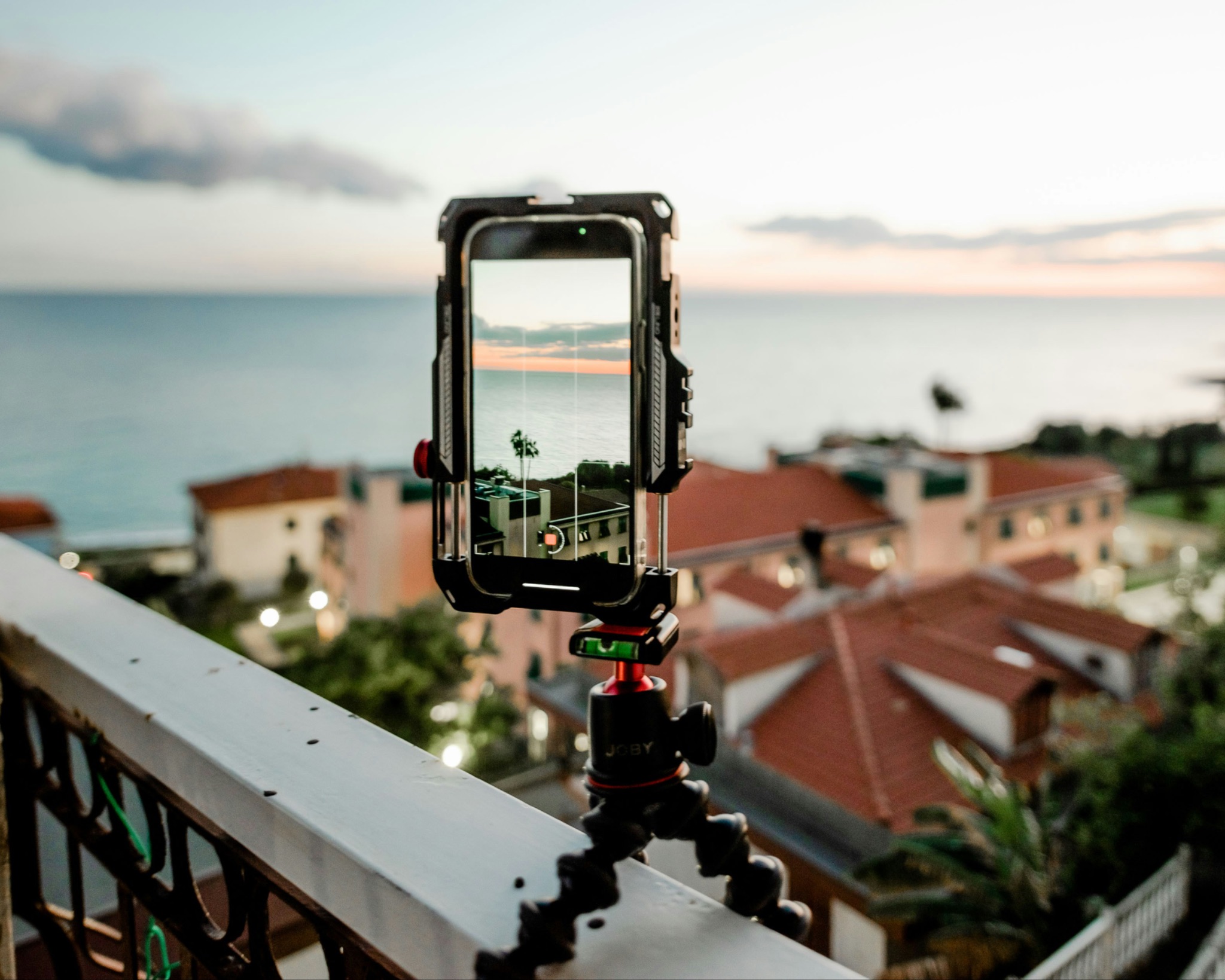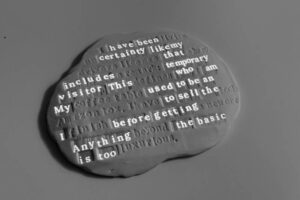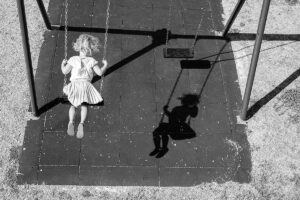
In this article, I’m going to answer all your questions about the rule of space in photography:
What it is. How it works. And how you can use it for amazing results.
Specifically, by applying the rule of space to photography, you can embrace the quieter moments in visual imagery – and you can amplify the impact of your subject by balancing positive and negative compositional elements.
Let’s dive right in.
What is the rule of space in photography?
The rule of space in photography is a method of incorporating visual absence to give a subject room to breathe.
Although the rule of space is more like a guide than a rigid rule, it is a handy compositional device. It’s a great way to add a sense of vastness, depth, and/or motion to a photograph.
Why is the rule of space important?
To understand the rule of space, we first need to take a brief look at positive and negative space.
Photographers use the terms positive space and negative space to contrast impactful and more subtle areas in a photograph.
Generally, positive space refers to specific subjects that command a viewer’s attention. Negative space, on the other hand, is less visually demanding and provides a frame for the main event in an image.
For example, in the image below, the clouds represent positive space, whereas the sky and dark shadows create the negative space that frames the main subject:
So where does the rule of space in photography fit in?
In general terms, the rule of space governs the use of negative space within an image. By understanding the nature of the rule of space, a photographer can harness the intent of a subject, as well as add depth and perspective to the image.
The rule of space is important because it aids a photographer in articulating the energy of a photograph – and it guides the viewer’s eye by sculpting key visual events and affording the subject more room to move.
Working with the rule of space: the basics
To work with the rule of space in photography, first consider the behavior of your subject.
Ask yourself: What is the subject doing? Is it moving or stationary? How does it occupy space?
At the same time, visualize what you want to convey in the photograph. Is it movement? Perspective? Depth? Narrative?
The nature and behavior of your subject plus your intent should together determine how you apply the rule of space.
Perspective
One of the main ways the rule of space can impact a photograph is through perspective. Abundant space around a subject can make the subject appear smaller or larger depending on the camera angle.
For example, a subject photographed from a high angle, surrounded with minimal detail, can seem smaller and more immersed in negative space:
Conveying momentum
The rule of space in photography can help you create the impression of movement.
To convey action, the rule suggests that space should be left either in front of or behind the subject (or both).
For example, if a subject is moving across a scene, you can aim to capture both the subject and the negative space surrounding the subject. The extra space conveys the subject’s movement, adding the momentum a tight crop may lack.
 Allowing a subject room to move adds momentum.
Allowing a subject room to move adds momentum. Canon 5D Mark II | Canon EF 24-105mm f/4L IS USM | f/10 | 1/640s | ISO 250
Adding depth
The rule of space in photography is not limited to highly active subjects; it works for stationary subject matter, too!
For example, in portraiture, your composition can be governed by pairing the gaze or gesticulations of the subject with negative space. A subject’s gaze naturally directs our attention – we want to see what the subject sees.
But when a gaze is met by negative space, the viewer’s eye will often naturally return to the original source of the gaze. The rule of space provides an organic way of adding depth and directing viewer attention.
You can also use the rule of space with non-human/animal subject matter – based on their movement, perceived gesticulations, and extensions. By following the momentum, composition, or behavior of a non-human subject, you’ll find ideal placements for negative space.
In the example below, I surrounded several blossoms with negative space; this additional room suggests growth and depth. It also highlights the detail in the individual florets.
 Leaving extra room around specific flower heads to articulate their elemental composition is one way to emphasize non-human subjects through the rule of space.
Leaving extra room around specific flower heads to articulate their elemental composition is one way to emphasize non-human subjects through the rule of space.Canon 5D Mark II | Canon EF 50mm f/1.8 II with extension tubes | f/2.5 | 1/1250s | ISO 200
Rule of space challenges
The process of applying the rule of space to photographs is not that difficult in itself. However, a tendency to cram each image with as much visual information as possible can get in the way of exploring negative space.
Instead, deliberately and mindfully take a minimalist approach. You can also zoom out or physically take a few steps back from a subject to refocus on the rule of space.
Tips and techniques for working with the rule of space
Here are a few tips for working with the rule of space:
Tip 1: Use other compositional rules, too
Applying the rule of space to your photography doesn’t have to come at the cost of other compositional rules.
In fact, combining compositional tenets with the rule of space in photography can increase the chances of creating a successful photograph.
Compositional rules such as the rule of thirds, leading lines, depth of field, and repetition can all be used in conjunction with the rule of space to create engaging imagery.
 Canon 5D Mark IV | Canon EF 24-105mm f/4L IS USM | f/5 | 30s | ISO 100
Canon 5D Mark IV | Canon EF 24-105mm f/4L IS USM | f/5 | 30s | ISO 100Tip 2: Let it breathe
The rule of space is all about giving a subject or a scene room to breathe.
So step back, zoom out, or even try a wider lens; that way, you can add a sense of spaciousness to your photos.
Tip 3: Experiment with different camera settings
Your choice of camera settings can help follow the rule of space more effectively.
For instance, you might use a shallow depth of field to surround a subject with negative space. You could also try using a slow shutter speed and panning your camera while leaving space before or after a subject to amplify movement.
The rule of space in photography: conclusion
The rule of space aims to create a mindful harmony of positive and negative space.
And by applying this rule, you can emphasize and frame positive subject matter while generating an evocative balance of weight and weightlessness within an image.
So the next time you’re out with your camera, remember the rule of space – and do what you can to apply it in your images!
Now over to you:
Have you been using the rule of space in your photos? How are you going to change your compositions to improve your use of space? Share your thoughts (and photos!) in the comments below.
Rule of space FAQs
What is the rule of space?
In visual art, the rule of space guides your inclusion of negative space within an image.
What is negative space?
Generally, negative space refers to areas in a photograph that are not occupied by the main subject matter. Often, negative space serves as a frame to emphasize the key subjects in an image.
How do photographers use the rule of space in composition?
The rule encourages photographers to make use of negative space. There are many ways to do this. You can focus on coupling subjects with negative space by selecting minimalist backdrops, or you can pair the gaze of a portrait subject with additional negative space.
Who are some photographers that use the rule of space?
There are countless photographers who make use of the rule of space. For example, photographers Martin Parr and Helen Levitt made striking use of the rule, as well as Hiroshi Sugimoto, Michael Kenna, and Eric Kim.
When can I break the rule of space in photography?
Photography is all about developing personal creative instincts and approaches. That’s why compositional rules can be broken. The rule of space in photography is simply a guide – so if an image looks better without extra space, then go with your instincts. And if you aren’t sure, try taking a series of photos with different spatial approaches and analyze the results.










 English (US) ·
English (US) ·